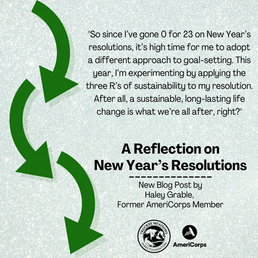The Secret to a More Sustainable Yard
When it comes to the environment, green usually means good. Whether it's vegetation like the lush leaves of a rainforest, organizations like Greenpeace, or just the general idea of "going green", the color green is seemingly always synonymous with a happy, healthy environment.
But here in Nevada, that's not always the case. Taking one look at Reno reveals why.
Here in the Truckee Meadows, we're surrounded by mountains brimming with high desert habitats. The hillsides around town are a sea of tans and browns. Contrasting that with the deep green of a trimmed grass lawn shows us our problem.
Simply put, in most places, lawns ain't natural. At all. The main grass species used in lawns, parks, and golf courses originated in the British Isles. If you haven't hopped across the pond, then let me tell you that Nevada and Britain are nothing alike. England and Scotland are lush, wet, and full of rain; I don't need to tell you that our desert here is anything but.
Depending on where you live, the average lawn needs somewhere between one to four inches of water every week. That means a 10,000-square-foot lawn (roughly the national average) in a dry place like here could need 6,230 gallons of water a week! That's a lot of water. And here in the American West, water isn't exactly limitless.
There's more to it than just water, though. While we humans often think of the lawns in our yards and parks as wonderful places where we can picnic or play soccer, they're far less valuable to animals. One quick hike on a trail through the high desert will reveal lizards, snakes, pollinators, and more. Contrast that with a walk in a park with a lawn where you'll probably just spot a few geese, squirrels, and maybe a duck. The shrubs, flowers, and other plants native to Nevada provide food and home for hundreds of species. Mown grass, on the other hand, is about as good as bare rock, as far as many animals are concerned.
So should you feel bad for having a lawn? Not at all! If you're one of the millions of Americans who contribute to the 50 million-odd acres of lawn across the country, that just means you're in the perfect position to start turning your yard into a sustainable Nevadan wonderland!
You'll have to start by tearing up some of your lawn. Now, I can hear you saying, "But I love my lawn, my kids play on it!" That's great, then keep some! Even just downsizing your lawn can make a huge difference. So, take a breath and think about how happy the wildlife in your neighborhood will be (and how much water you'll save; that translates into money, remember!).
Alright, so now we've gotten rid of some grass, but what now? There are plenty of options. Here are but a few:
Rock Garden
Love the ruggedness of the desert and mountains and want a yard that's super low maintenance? A rock garden might be perfect for you! Garden and home stores like Moana Nursery and Home Depot stock and deliver a huge variety of decorative rocks, gravel, and save. Get creative and build a beautiful space with granite, lava rocks, river rocks, and more!

High Desert
Want a yard with more than just rocks but that's still easy to take care of? Try putting some desert shrubs in and amongst the pebbles and sand. Soon, you'll have your very own high desert habitat! Pollinators will love it.

Pollinators
Speaking of pollinators, why not build a haven for them! Native Nevadan wildflowers like penstemons and lupines will add pops of color to any yard. Not only will you love the purples and blues, but pollinators of all kinds will be able to use your yard to help keep the Truckee Meadows thriving.
Trees & Mulch
Want some shade for those toasty summer months? You're in luck! Trees like incense cedars, pines, chokecherries, and cottonwoods are native to parts of the Truckee Meadows. Try putting mulch around them instead of grass; not only does that majorly reduce the amount of water you need to use, it also helps keep the trees healthy! Suddenly you'll have a sustainable spot in which birds can make a home!

Veggies
If you're feeling adventurous and want to take your yard to the next level of sustainability, try growing some veggies! Even just a bed or two can keep your kitchen full of tomatoes, kale, and more. Not only do you get some yummy food, but you'll be keeping your footprint more local for which the planet will be ever grateful!
Alright, are you feeling inspired to ditch the grass for some of the above options? Great! Check out local stores like Moana Nursery to get started.
And if you don't have a yard, you can still make an impact! A potted plant or a window box of native plants could be just what your local pollinators or insects are looking for. That can only help the rest of the food chain; maybe that bug will be food for a bird and keep the ecosystem chugging along!
Sources:













Comments